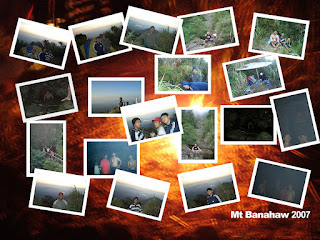Most people who enjoy the outdoors have experienced cramps at one time or another, and they can figuratively and literally bring you to your knees. Medical science is not 100% sure what causes cramps, but do know what you can do to help prevent them and deal with them when you get one.
 A cramp is when a muscle or group of muscles suddenly starts to spasm. The muscles in our body move our joints around by flexing and contracting, it is when a muscle spasms into the contracted state that we get a cramp. You may have been awoken in the middle of the night with a searing pain in your Achilles (the muscle behind your leg that runs from your ankle to the back of your knee) as this is a common cramp.
A cramp is when a muscle or group of muscles suddenly starts to spasm. The muscles in our body move our joints around by flexing and contracting, it is when a muscle spasms into the contracted state that we get a cramp. You may have been awoken in the middle of the night with a searing pain in your Achilles (the muscle behind your leg that runs from your ankle to the back of your knee) as this is a common cramp.Medical science does know that there are three major factors that contribute to cramps, hydration, fatigue, and conditioning. Our body runs on a very complex system of chemical reactions. In the simplest form potassium and sodium molecules swap sides on the surface of a cell carrying poisons out and nutrients in. When we get dehydrated this process can slow and the poisons, including nitrogen get trapped in the cells.
Hydration is very simple to solve. Drink a lot of fluid. Under normal conditions you should drink about one quart of water for each hour of hiking or physical activity you are involved in, more under hot, cold, or extremely dry conditions and when at high altitude. You should also eat from 250 to 400 calories during that hour. Your water bottle in your pack does not help you reach this goal. Carry a water bottle with you where it is easily accessible or even better invest in a hydration pack that allows you to sip water at will. Non-carbonated sports drinks like Gatorade seem to help, although there is debate in medical society on how much benefit there is. Waiting to drink until you are thirsty is a bad approach, once you are thirsty, you are already getting dehydrated, and you are one step closer to getting cramps.
Fatigue seems to also contribute to cramps. Dr. Martin P. Schwellnus MSc from the University of Cape Town in South Africa established the theory that fatigue, not dehydration causes cramps, and his theory is gaining many supports in sports medicine circles. Sports medicine doctors have observed that athletes in the beginning of the season tend to have a lot more cramps then towards the end of the season. The conclusion is that they are less conditioned at the beginning of the season and more prone to fatigue. Most hikers who live in cold climates and get holed up in the winter seem to experience this same phenomenon.
Staying in shape and not over extending yourself is also sage advice when on the trail. A general recommendation is to walk one hour and rest fifteen minutes (a good time to eat those 250 to 400 calories too). If you are ascending up a steep grade for a long duration (like the Bright Angel Trail in Grand Canyon or the Forty-Five on the Appalachian Trail in New Hampshire) you should ascend about 1,000 feet per hour, and rest fifteen minutes. Pay attention to your body, feeling tired, weak, nauseous, or thirsty are all signs you are getting fatigued.
Both circles of thought agree that stretching helps prevent cramps. Before any physical activity you should go through a series of stretches to warm up the muscles. Hikers in particular need to stretch the muscles in their legs, with special attention to the Achilles as this is a very common point to get cramps, and an Achilles injury, which has had a significant rise in the last couple of years, can be excruciatingly painful and debilitating. Spending about fifteen minutes stretching before hitting the trail can be highly beneficial.
Medical doctors also agree on how to deal with cramps when you get one. If your track and field teacher ever told you to, walk it off, he or she was giving you pretty sage advice. Unless you have damaged a muscle or joint from overextending, passive stretching, massage, and flexing should work the cramp out. Gently flex the affected area stretching the muscle, and forcing blood back into the tissue. If the cramp continues for an extended period of time, you should seek our medical attention, you may have damaged or torn a muscle, tendon, or joint. Generally speaking however, cramps do not need the attention of a medical doctor.
Keep a steady pace. About 2 to 2.5 miles per hour if you�re an adult of average height, walk for an hour and rest for fifteen minutes.
Stay hydrated. Drink one quart of fluid each hour, and more if you are in hot, cold, dry, or high altitude conditions.
Stay nourished. Eat about 250 to 400 calories per hour if you are exerting yourself on trail, high calorie, high carbohydrate foods with protein work best.
If you get a cramp do passive stretching to work it out, walk it off, is actually good advice, be firm in your efforts but don't force a constricted muscle.









